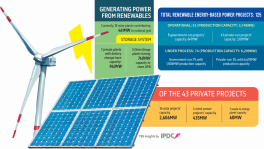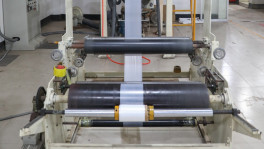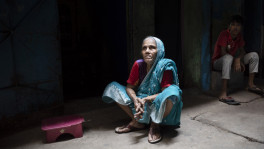Bangladesh to double its fossil fuel imports in a decade
Target of generating 10 percent renewable energy in 2020 unlikely to be met

Bangladesh is projected to double its fossil fuel imports in the coming decade amid a supply crunch of domestic coal and natural gas, as well as growing electricity consumption in the country, says a recent report by energy consultancy group Wood Mackenzie.
Meanwhile, the country is set to miss its 2020 target of generating 10 percent power from renewable sources, with clean energy to make up only 2 percent of total power generation this year.
Nasrul Hamid, state minister for Power, Energy and Mineral Resources also agreed with the report.
"We don't have alternatives but coal and gas. We are emphasising on gas because considering the efficiency and environmental aspects, gas is better," said Nasrul.
Regarding the failure to meet the renewable energy target, he said land is the main limitation in harnessing renewable energy in Bangladesh.
"Also, the latest technologies are not that prospective here," he added.
Wood Mackenzie states total energy demand in the country is projected to increase 27 percent to 55 million tonnes of oil equivalent (Mtoe) in the next 10 years, causing imports of thermal coal and natural gas to rise to 32 Mtoe by 2030. Its key suppliers are expected to be Indonesia and Australia.
Apart from the country's burgeoning population, rising income levels and ongoing rapid urbanization –which are driving some of the growth in demand for electricity –it is the nation's export-driven textile, jute and fertiliser industries which are gaining ground in the country's primarily agriculture-based economy that will account for most of the increase.
Electricity demand in Bangladesh has risen by 6 percent annually in the last decade, and this trend is expected to continue in the coming years.
This is due to the country's relatively low power consumption per capita, with 12 percent of the population of 160 million still lacking access to electricity.
"At the moment, about 60 percent of power generation in Bangladesh comes from the domestic gas supply, which is depleting. To meet this gap, additional capacity will be required as early as 2022," observed Prakash Sharma, Wood Mackenzie's Asia Pacific head of markets and transitions.
He added that liquefied natural gas and coal will account for most of the increase in fossil fuel imports between 2020 and 2030.
Although Bangladesh is one of the most vulnerable nations to the impacts of climate change, its coal demand is set to grow over four times to 12 Mtoe in the coming decade as the government adds import-based thermal coal capacity to bring down electricity generation cost and increase reliability, according to Wood Mackenzie.
In the global ranking of coal power capacity in active development, the country has jumped from 12th to sixth place in the last three years.
Bangladesh has at least 29 coal power projects with a total capacity of more than 33 gigawatts in the pipeline, with some already under construction. If all the proposed power plants get built, the nation's coal power capacity would increase by 63 times.
Burning more coal–the world's dirtiest fossil fuel–would take a heavy toll on Bangladesh. Not only would the cost of importing the fuel likely result in a negative trade balance, its people – already suffering the world's worst pollution by weighted population average – would be exposed to dirtier air and more devastating climate change impacts.
Commenting on Wood Mackenzie's statement that Bangladesh needs coal and LNG imports to support "a reliable baseload capacity for its electrification needs," Simon Nicholas, energy finance analyst at the Institute for Energy Economics and Financial Analysis, said, "Bangladesh's Power Development Board makes consistent heavy losses that require increasing government subsidies. Last fiscal year, the subsidy reached almost $1 billion."
Bangladesh has lagged in efforts to tap its abundant clean energy resources. With the government failing to implement financial incentives beyond the feed-in tariffs it pays for green electricity, the country's nascent renewable energy sector has grappled with a lack of access to finance, as well as technical expertise, the Wood Mackenzie report reads.
However, there are positive signs. Last year, Bangladesh signed a $185 million financing agreement with the World Bank to add about 310 megawatts in clean power capacity. Earlier this year, the Bangladesh bank launched a green transmission fund to accelerate the switch to renewables.
"This should provide upside to investments in the renewables sector," said Sharma.
Wood Mackenzie expects renewables to make up 6 percent of Bangladesh's power mix by 2030, and 16 percent by 2040.


 Keep updated, follow The Business Standard's Google news channel
Keep updated, follow The Business Standard's Google news channel
















